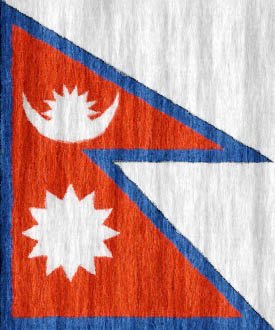By Pratibha Tuladhar, DPA
Kathmandu
Ram Bahadur Thapa’s eatery in a busy office area of Kathmandu has gone from bustling to quiet and dark in the past few months, as fuel shortage has taken its toll on his business.
The Himalayan nation has been facing a blockade in the southern plains adjoining India due to protests against the new constitution that began in August and have claimed at least 50 lives. India has closed the border with its landlocked, import-dependent neighbour.
“We used to earn between 8,000 to 10,000 rupees a day before the fuel crisis. These days, it’s hard to even make 3,000 rupees, or about $28,” Thapa said, adding: “We had to dismiss our helpers as we could not pay them any longer. We’ve also had to trim our menu because we can only cook food that doesn’t require much fuel.”
Thapa and his wife run the place. They cook on electric heaters when there is electricity and light the restaurant with candles. He might need to look for an alternate source of income soon if the fuel crisis does not ease, he said.
Electrical power outages have increased from seven hours per day in November to 10 hours daily this month, the national electricity authority said. Some areas have it even worse.
“Our area hasn’t had electricity for three days, so we’re eating dinner outside,” Dilbhusan Pathak, a popular TV show host, wrote on Twitter.
For those in the neighbourhood who cannot afford to eat out, there are few options.
“What do you do when there’s no cooking gas or electricity? We are eating beaten rice and fried lentils,” said housewife Bindu Shrestha.
The government has been selling subsidized firewood and has commissioned logging in some places, raising the fear of deforestation.
The fuel crisis is pushing Nepal further into poverty, according to the country’s central bank. Economic growth has dropped to 2%, from the earlier target growth of 6 per cent per year, it said.
“The ongoing Terai blockade has added to the economic crisis,” economist Shanker Sharma said. “The skyrocketing price of food items is likely to impact nutrition and health.”
More than 2,000 industries have been closed in the southern Terai region, the country’s main industrial corridor.
“Economic losses from the earthquake and blockade stand at 2,100bn rupees ($2.36bn),” economist Biswamber Pyakurel said.
“Black marketeering and corrupt politicians and bureaucrats are thriving, while general consumers have been suffering,” he said.
The price of food has nearly doubled in the markets, as shopkeepers and customers have been hoarding food items and stockpiling.
Petrol, which cost around 104 rupees ($1) per litre ahead of the blockade, was being sold for 400 to 500 rupees on the black market.
Hospitals complain they are running out of supplies, as around 350 trucks laden with drugs were still stuck at the border. Syringes and medicines for chronic diseases are in short supply, according to the Nepal Chemists and Druggist Association.
Nepalese are facing one of the harshest recent winters, as temperatures have plummeted. The gas for the heaters used in previous winters is lacking or too expensive for many.
The blockade compounds supply problems from two major earthquakes in April and May that left nearly 9,000 people dead and hundreds injured. Many survivors are suffering in temporary shelters as the harsh Himalayan winter begins.
“The cold has become worse and worse in recent days. I sleep on two mattresses and it’s still not warm enough. Imagine how cold children and the elderly are,” said Laxmi Prasad Duwal, who lives in a temporary shelter for earthquake victims in
Bhaktapur.
In that city alone, 6,000 people were displaced by the quakes and are forced to sleep in sheds built from corrugated tin sheets.
The government has offered 200,000 rupees ($1,850) to each displaced family for rebuilding. But the application procedure is lengthy and bureaucratic.
“The government should speed up the process for rebuilding. Many children are ill
because of the cold,” Duwal said.



